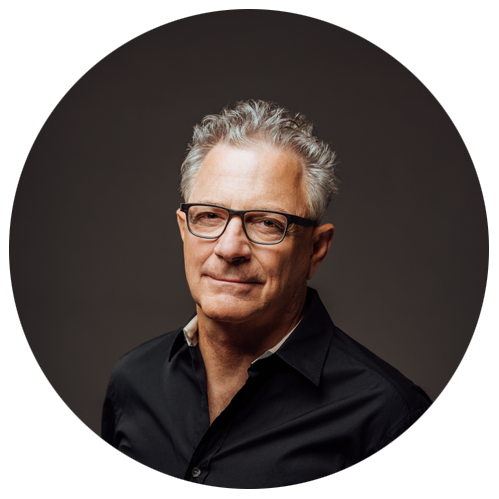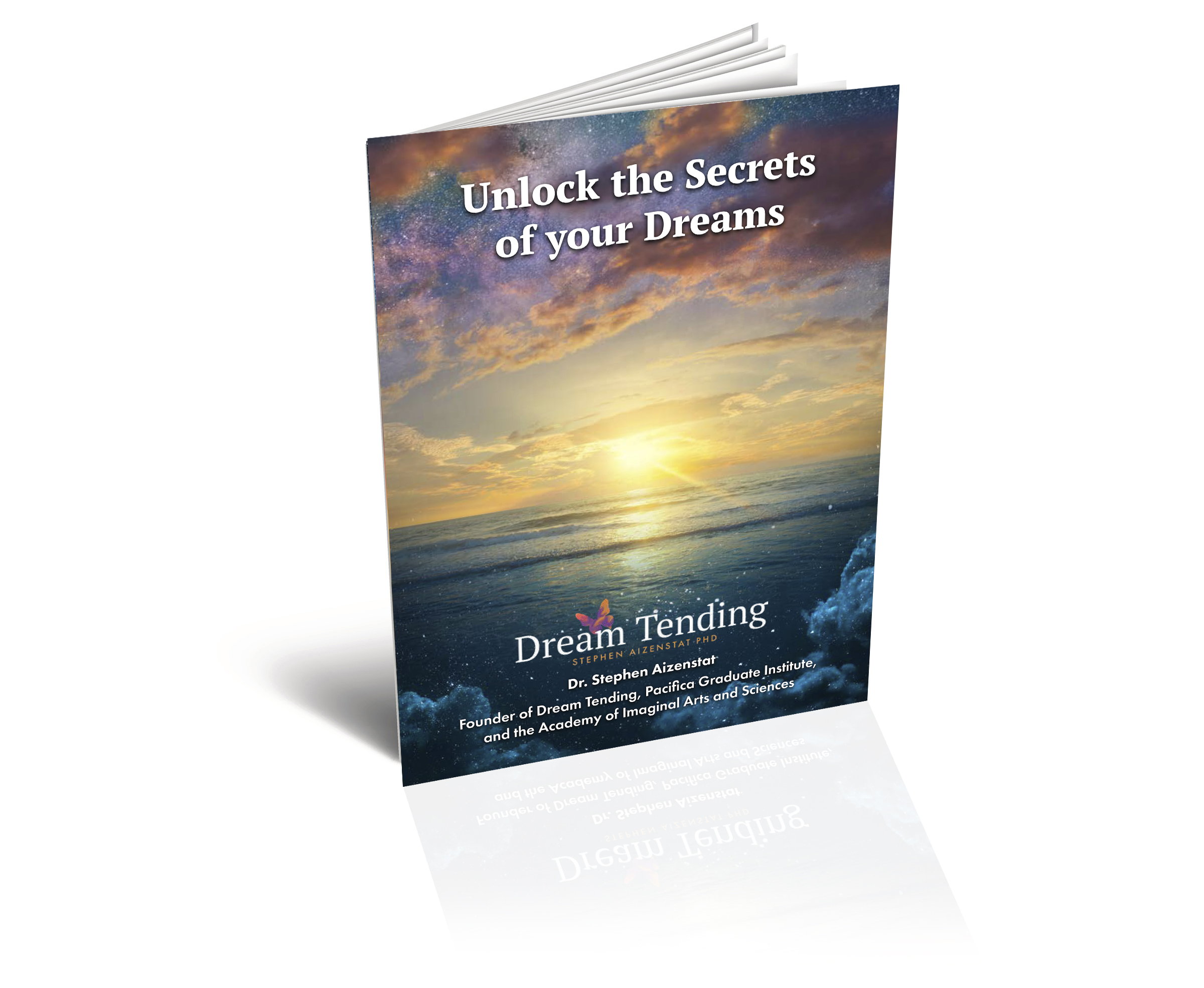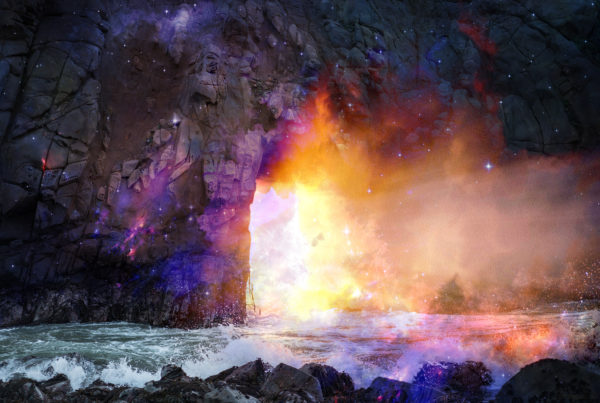Throughout history in nearly every culture, humans have sought to unlock the meaning of dreams. Some cultures viewed dreams as messages from the gods. Others saw the dream world as a space between the worlds where people could meet and learn from ancestors. In modern times, Freud recognized dreams as messages from our own subconscious selves, and Jung proposed the concept of universal archetypes that appear in dreams, connecting us to each other and to the larger world community.
With Dream Tending, Dr. Stephen Aizenstat builds on these concepts to offer a new understanding of dreams and a method of interacting with living dream images to improve life and relationships with ourselves, our loved ones and the world itself.
A Brief History of Dream Interpretation and Analysis
Nearly every culture throughout history, from Australian aborigines to the Hebrews of the Old Testament to Native American nations, has recognized that dreams can provide access to hidden dimensions of the world and new perspectives to enrich and improve our everyday lives. Dream messengers were seldom straightforward, though. Instead, they employed symbols and puzzles to deliver their advice and warnings, poetic images that could be understood only through the help of some sort of dreamworker. In ancient times, those dreamworkers may have been oracles, seers, shamans or others possessed of mystical understanding and powers.
Beginning in the late 19th century, psychologists and psychoanalysts have been the men and women to function as modern dreamworkers, proposing a number of theories about dreams—where they come from, why we have them and what they mean. At the same time, scientists have been able to use new technologies to study the dreaming brain. Research has found dreams to be integral to our overall health and well being. However, dreams are more than the random firing of neurons in the the brain.
Dimensions of the Dreaming World and How They Relate
For more than 35 years, Dr. Stephen Aizenstat has been studying dreams as a healing modality and method of connecting with the larger world. His work builds on and expands earlier “established” theories, enriching them with a deeper understanding of ancient beliefs about dreams. As an example, Dr. Aizenstat writes about the four dimensions of the dreaming psyche:
Awake Consciousness
Dreams frequently take images and happenings from everyday life and present them in a dream. If you spend hours playing a video game, for example, you shouldn’t be surprised to find images and events from the game appearing in your dreams. These surface images lend themselves to facile interpretation—you’re simply replaying the day’s events in your mind, according to some researchers. Interestingly, those researchers have found that people who dream about a task they’ve been doing often perform better at that task than people who don’t, suggesting that dreams help cement memories (including, some suggest, emotional memories) in your mind.
Personal Unconscious
Here is the realm of dream symbolism, with the dreaming self offering up personal memories and images from the past when triggered by something in the present.
For example, a dream analyst or psychologist may ask you to think about the dream image of your grandfather to figure out why your mind is conjuring him now. In Dream Tending, you’d animate the image of your grandfather and engage him, walk with him, talk to him and learn why he has come to visit. By viewing your dreaming as a real landscape with living images, you open yourself to learning and experiencing what they are trying to tell you.
Collective Unconscious
Carl Jung proposed the concept of the collective unconscious, a part of the unconscious mind that contains images, memories, patterns and instincts that are common to all mankind. He, along with Joseph Campbell and others after him, identified and named archetypes, a collection of images, such as the the Great Mother or the Warrior, that occur again and again throughout history and across cultures. When we enter the archetypal dimension of a dream image, we discover how the larger story of human history is related to our own personal lives.
World Unconscious
Dr. Aizenstat brings attention to a fourth plane of dreaming—the World Unconscious—in which everything in the world is alive, interconnected and dreaming. This echoes some of the oldest of dream traditions, such as the indigenous Australian concept of the Dreamtime. In this dimension, the dreamscape is itself a living world, where dream images walk about, observe each other and interact in dynamic relationships. In this living landscape, you can cultivate a deeper sense of connectedness to the rhythms of nature and pursue healing rooted in re-weaving the connections that are broken in the waking modern world.
Dream Tending: In The Way of the Dream
Our Western experience pushes us toward analyzing and interpreting our dreams as a way to understand ourselves. In that modality, dreams are static messages we view from the outside—but we can access only so much information when we are outsiders.
Dream Tending teaches that dreams and everything that appears in them are alive. When you set aside your analytic mind and engage the dream “in the way of the dream,” you enter a living landscape where you can access not only your own memories and knowledge, not only the ancestral knowledge of humanity, but the experiences and interconnections between all things in the world.
When we enter the world of the Dream, Aizenstat says:
“We take the time to listen, to be present, to deepen. We allow our curiosity to become active, our intuition engaged, and we entertain the multiplicity of possibilities. Our eyes turn from focused to soft, and we see broader landscapes — wider vistas in which the beauty of diverse peoples, creatures, and things can thrive and be appreciated. With relationship to the soul comes bemusement, and we enjoy the presence of that which is strange or unfamiliar. In tending the dream, we pause, become patient, and host the visitation of the guest.”
Dream Tending introduces you to the living images that inhabit the worlds within and the world you inhabit. It improves your life by fostering mindfulness and healing through engagement, deepening your sense of identity, purpose, and your place in the world.
Written by Deb Powers
Deb Powers is a freelance writer who has studied and written extensively about archetypal images, dreams and metaphysical subjects. Her self-published tarot deck focuses on using tarot images and concepts for self-empowerment, problem-solving and personal growth.
References:
- https://www.cbc.ca/news/technology/sleep-help-process-rats-emotions-1.4288383
- https://newsinhealth.nih.gov/2013/04/sleep-it
- https://www.dictionary.com/browse/collective-unconscious
- Radical Human Ecology: Intercultural and Indigenous Approaches by Rose Roberts (p. 100)
- https://dreamtending.com/wp-content/uploads/2019/02/visible_world-new.pdf

Stephen Aizenstat
Stephen Aizenstat, Ph.D., is the founder of Dream Tending, Pacifica Graduate Institute, and the Academy of Imaginal Arts and Sciences. He is a world-renowned professor of depth psychology, an imagination specialist, and an innovator. He has served as an organizational consultant to major companies and institutions, and as a depth psychological content advisor to Hollywood film makers. He has lectured extensively in the U.S., Asia, and Europe. He is affiliated with the Earth Charter International project through the United Nations, where he has spoken. Professor Aizenstat is the Chancellor Emeritus and Founding President of Pacifica Graduate Institute. He has collaborated with many notable masters in the field including Joseph Campbell, James Hillman, Marion Woodman, and Robert Johnson.
Unleash your creativity and innate genius
Learn the Power, Purpose and Intelligence of Dreams
Improve the quality of your relationships, discover your authentic life purpose and improve your emotional and physical health with the Dream Tending Academy.
Free e-book download
For over 40 years, I have devoted my life to understanding the profound wisdom and healing power that exists within each of us. I am excited to share my latest e-book that showcases how to tap into your dream state through the powerful applications of creativity and innovation. By following my groundbreaking methods and techniques, you will discover how to unlock your creative potential, increase your emotional and intellectual bandwidth, and realize your personal and professional goals. Download my e-book and unlock the secrets of your dreams and deep imagination!








